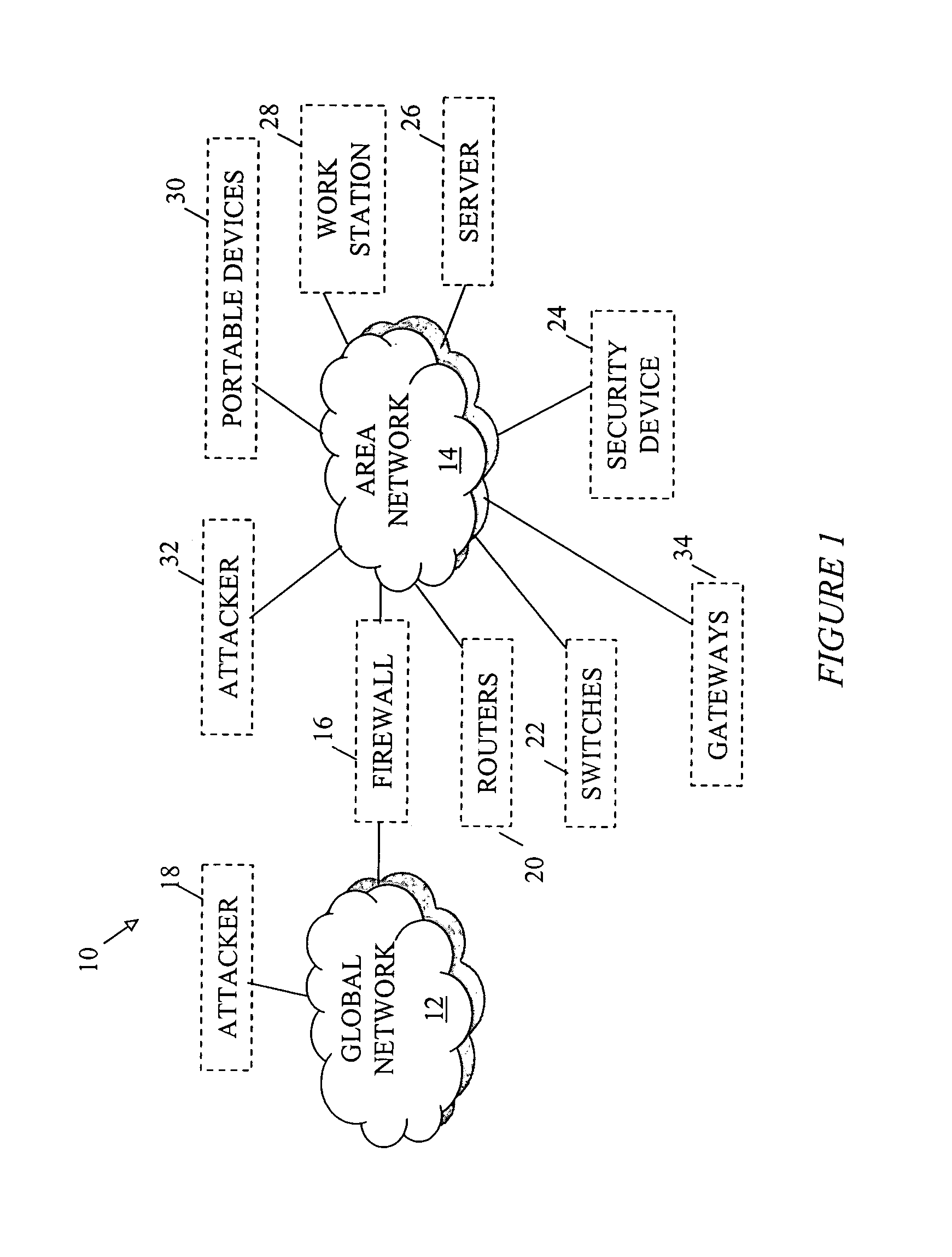System and method for managing network communications
a network communication and network packet technology, applied in the field of network packet transmission system and method, can solve the problems of devices having a list of known threats or devices of interest, and achieve the effect of effectively cloaking their existence and preventing direct communication
- Summary
- Abstract
- Description
- Claims
- Application Information
AI Technical Summary
Benefits of technology
Problems solved by technology
Method used
Image
Examples
Embodiment Construction
[0047]In attempting to contact and infiltrate networks, attackers or programs implemented by the attackers act with characteristic behaviors to determine the address of computers on local segments and communicate with them. These behaviors may be used, separately, or in combination with packet signatures and filters, to identify the attackers as threats. Once identified, communication between the network and the attacker may be controlled, preventing further damage. One method is to deceive the attacker, preventing them from either perceiving the existence of a machine or redirecting their communication to an alternative device such as a security device or sacrificial computer.
[0048]FIG. 1 is a schematic block diagram depicting a network according to the invention. An area network 14 is connected to a global network 12. A firewall 16 may or may not be placed between the global network 12 and the area network 14. Connected to the area network 14 may be routers 20, switches 22, securi...
PUM
 Login to View More
Login to View More Abstract
Description
Claims
Application Information
 Login to View More
Login to View More - R&D
- Intellectual Property
- Life Sciences
- Materials
- Tech Scout
- Unparalleled Data Quality
- Higher Quality Content
- 60% Fewer Hallucinations
Browse by: Latest US Patents, China's latest patents, Technical Efficacy Thesaurus, Application Domain, Technology Topic, Popular Technical Reports.
© 2025 PatSnap. All rights reserved.Legal|Privacy policy|Modern Slavery Act Transparency Statement|Sitemap|About US| Contact US: help@patsnap.com



